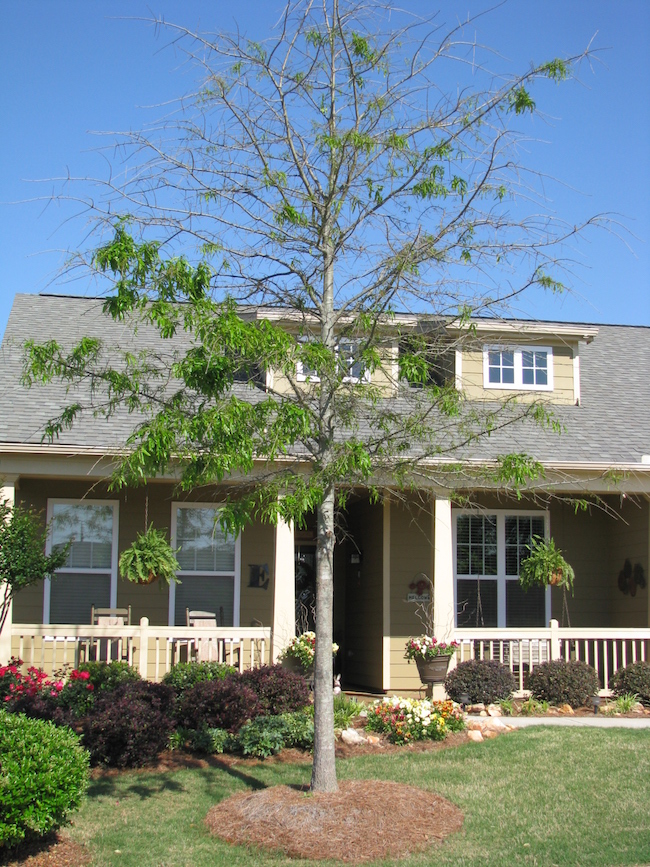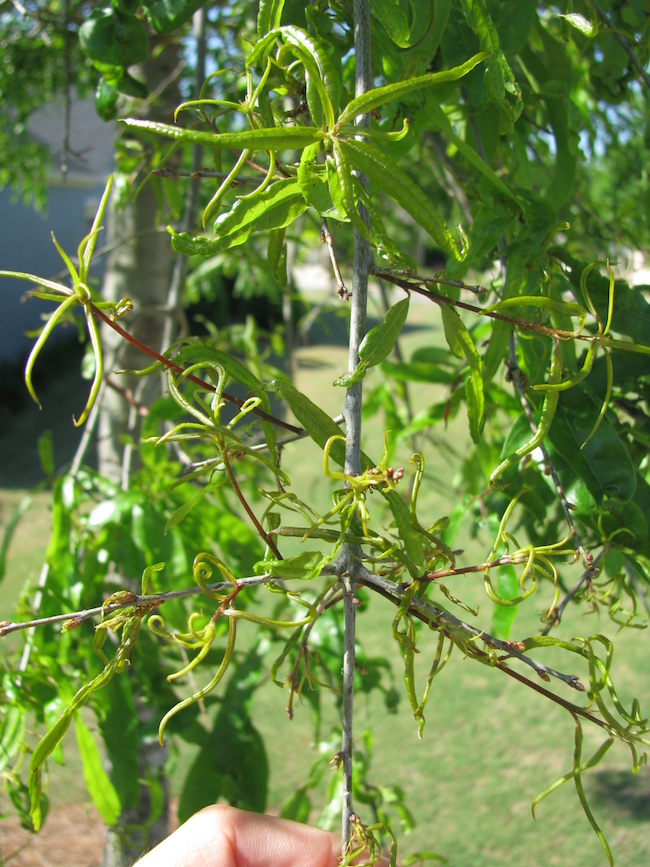It can take years for a tree to reach full maturity, but it only takes one or two seasons of damage to irreparably harm the biggest and most expensive piece of a well-designed landscape.
Drought, insects and blight can all cause damage to mature trees. But more often than not, when a mature tree takes a turn for the worse, the culprit may be human error.
“Extension agents get hundreds of these calls every summer,” said Paul Pugliese, University of Georgia Cooperative Extension coordinator for Bartow County. “People tell us they have an otherwise healthy tree, but this year it started producing damaged-looking leaves.”
In cases like this, symptoms may have been caused by accidental herbicide damage. Gardeners may be familiar with the rippling, curling and deformed leaves that accidental herbicide exposure can cause on vegetable plants and flowers. While it takes more herbicide to damage a tree, they’re not immune to that herbicide damage, Pugliese said.
Trees are usually exposed either through spray drift from a nearby herbicide application or by absorbing herbicides applied to lawns to prevent dandelions and other broadleaf weeds. When controlling lawn weeds, homeowners and landscapers should not apply herbicides near the root zones of trees and shrubs.
The damage is done
The amount of damage seen in the tree depends on the amount of herbicide absorbed by the tree and the area exposed.
Popular herbicides containing 2,4-D and other broadleaf weed killers are notorious for causing leaf curling, but other consumer and commercial herbicides can also cause deformities.
In many cases, the damage caused by the herbicide will be permanent. Deformed leaves one year means leaves will emerge deformed for the remainder of the tree’s life. Some trees will ultimately decline or die over the course of several years.
“Springtime is when you’re going to see these dramatic effects, when the leaves are pushing out and the herbicide is being drawn up into the tree,” Pugliese said.
Pugliese has seen deformed leaves with twisting and curling symptoms that look like pigs’ tails, leaves that appear scorched and leaves that look like they are drought-damaged, but feel like normal leaves. The severity of the deformity determines whether the tree will be able to continue to capture enough sunlight and produce enough energy to sustain itself.
How to know
There are lots of tree disorders that can cause similar symptoms, and not all damage is due to herbicides, he said.
It’s time to suspect herbicide damage if you’ve ruled out other factors, like water stress, viruses and insect damage. If the damage is limited to one species of shrub or plant in the landscape, insects or disease could have caused the damage.
“The unique thing about herbicide damage is that it’s going to be more widespread through the landscape in terms of the types of plants affected,” Pugliese said. “Insects and disease are going to be very host-specific, causing injury to one group of related plants. If you see multiple species of plants with injury, then that’s a good indication that you’re dealing with herbicide damage.”
Also, if damage appears on just one part of a tree, leaves on only that part of the tree may have been hit by some herbicide overspray.
The UGA Extension Agricultural and Environmental Services Laboratories offer plant tissue testing that can determine whether a tree or shrub has been exposed to an herbicide, but it is expensive – about $100 per sample.
Protection
The best course of action is to take extreme caution to avoid the root zone of trees and ornamental plants when applying lawn herbicides, Pugliese said. Homeowners and landscapers should avoid applying broadleaf herbicides on windy days, avoid applying them before rainy periods and avoid applying them above the root zones of trees.
Maintaining a mulch island on top of the tree's roots not only conserves water and cools the roots, it can also protect against overspray. The mulch island should be expanded as the tree grows to cover an area larger than the width of the tree branches to avoid having to spray lawn herbicides too close to the tree’s roots. The rootball of a mature tree can extend up to two times as wide as the tree’s canopy.
For more information about safely applying herbicides to urban lawns, read the UGA Extension publication “Weed Control in Home Lawns” at extension.uga.edu/publications/detail.cfm?number=B978 or visit extension.uga.edu/publications.








